Ryan Hall's Blog, page 295
January 29, 2016
Adidas Launches Unique PureBOOST X Shoes For Women Only
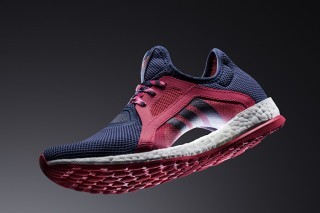
Adidas designed the PureBOOST X with a form-fitting floating arch engineered to support the foot throughout any run.
Adidas has come up with some rather unique running shoe concepts through the years, including shoes with plastic blades for cushioning and propulsion and the first electronic-enhanced running shoe. The new PureBOOST X is the latest to come out of the German brand’s design labs, and, just to make it even more unique, adidas is making it only for women.
Created with an innovative “floating” arch, the PureBOOST X has been engineered to move with the natural motion of a woman’s foot while also apparently designed to make a fashion statement, too. Competitor has not tested this shoe, but we did see it at The Running Event trade show earlier this winter. It’s a one-of-a-kind design to be sure, one adidas says will provide underfoot support throughout a run. The shoe sports a full-length Boost foam midsole and rubber outsole, but the upper is only connected at the rearfoot and forefoot, leaving an open area under the arch from the front of the heel to roughly the metatarsal heads.
Adidas says the design was derived by using leading-edge motion tracking software to capture foot movement data of female runners. The shoe’s strechy mesh floating arch detail that wraps underneath the midfoot is intended to deliver a comfortable wrap-like fit and a “supportive sensation you can feel during every run,” the brand says. (Watch this video to see the shoe in action.)
“The most common feedback we received during our years of working with female athletes was the desire for a running shoe with looks to keep up with the energy of its performance,” said Jennifer Thomas, adidas’ senior director for its Global Running division. “PureBOOST X is a product of innovation and style working in perfect harmony to meet the demands of today’s versatile female athlete.”
RELATED: 40 Running Shoes You’ll Want to Check Out in 2016
Adidas says the upper, floating arch and lock-down lacing system provide an adaptable fit that hugs the foot from heel to toe. An unique stretchy web-like rubber outsole is designed to allow for flex at any point enabling the foot to maintain its natural motion.
Perhaps the curious thing about this shoe is that adidas is connecting it with its fashion-oriented lines designed by Stella McCartney. It says it combines “trend elements with performance,” offering extra support without compromising style.
The PureBOOST X will retail for $120 when it becomes available on adidas.com and at select retailers on Feb. 1. The adidas by Stella McCartney version (offered in different colorways with more design details) will be available Feb. 15 for $170.
RELATED: See What Women’s Running Magazine Says About PureBOOST X
The post Adidas Launches Unique PureBOOST X Shoes For Women Only appeared first on Competitor.com.
Win Your Own Porta-Potty at the Twin Cities Marathon
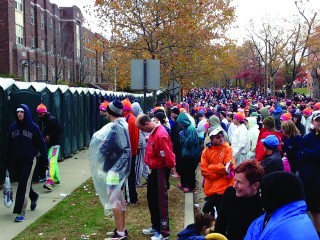
Photo: Courtesy of NYRR
Online registration for the Twin Cities Marathon in Minneapolis will open on Feb. 2, 10 a.m. CST, and this year for their 35th anniversary they’re giving away a very unique prize.
Runners who register before the first price increase on Feb. 10 will be eligible to win the Grand VIP Package, which includes: Two tickets to the finish line VIP tent and a personal porta-potty at the start line reserved exclusively for the winner and their friends.
“We know how important toilet availability is to runners before a race, and we realized this is something we could actually offer a runner,” said Virginia Brophy Achman, the Executive Director of Twin Cities in Motion, on how they came up with the idea. “It’s not difficult to manage one VIP portable restroom, and we thought runners would have fun vying for the prize.”
Indeed, now that popular marathons and half marathons such as Twin Cities are growing in participants, porta-potties at the start line have become a limited supply in high demand with long, and sometimes stressful, wait lines. Last year’s New York City Marathon, the largest marathon in the U.S., had set up 1,748 portable toilets at the race start to cater to its 50,000-plus entrants.
The post Win Your Own Porta-Potty at the Twin Cities Marathon appeared first on Competitor.com.
2016 Running Camps You Should Check Out
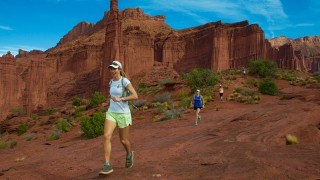
Yes, you can (and should) go to a running camp this year.
Training camps are the norm for professional athletes. The singular focus on the sport, attention to nutrition and camaraderie formed at the running camps contribute not only to the athlete’s training, but also to shaping a more positive outlook and experience. Sounds amazing, right? Now, you can go to camp too. Adult running camps exist for runners of all interests and abilities—from lifelong runners zeroing in on a PR to relative newbies who want to hang out with like-minded people in a beautiful place.
Kara Goucher created her running and wellness-focused Podium Retreat for that very reason. “It’s a chance to bond with other women over your love for running,” says the two-time U.S. Olympian. “You learn so much that can help you in running and beyond.”
We’ve pulled together some of the best running camps across the U.S. Some camps focus on performance-oriented training; others focus on holistic wellness. And often, nutritious meal-sharing, stretching, yoga and other activities are often built into camp programs.
2016 Running Camps
*Check camp websites for specific 2016 program dates.
AREEP’s Trail Running Camp
Warrensburg, N.Y.
This summer camp for adults includes group runs, yoga and educational sessions for a weekend of fun and learning set at the Dippikill Wilderness Retreat.
Info: Areeptrailrunningcamp.com
Cool impossible Run Camps
Jackson Hole, Wyo.
Good form and balanced strength are essential to all types of running, but especially to mountain running. Eric Orton uses gorgeous trails as his classroom for teaching skills and an appreciation for moving in nature.
Info: Runningwitheric.com/page/eo-run-academy
Craftsbury Outdoor Center Running Camps
Crafstbury Common, Vt.
Get away for a weekend or a week of old-school New England summer camp, complete with running, yoga, hiking, biking and even eating in a dining hall. Meals are made with fresh, local produce!
Info: Craftsbury.com
CTS High-Altitude Ultrarunning Camp
Colorado Springs, Colo.
Coach and ultrarunner Jason Koop shares the same training, pacing and mountain running tips he teaches the pros (Dakota Jones, Tim Olson and Dylan Bowman), with a 50K run on the final day.
Info: Trainright.com
FIRST Adult Running and Learning Retreat
Greenville, S.C.
Data hounds, this camp is for you. It includes in-depth testing (like VO2 Max, gait analysis, body composition) and FIRST’s training plan to help make you a more efficient runner.
Info: Furman.edu/sites/first/Pages/RunningR...
McMillan Running
Flagstaff, Ariz.
Coach, author and runner Greg McMillan’s camps are geared toward runners of every level, and also include trail and ultra options.
Info: Mcmillanrunning.com
Jeff Galloway Retreats
Blue Mountain, Fla., and Lake Tahoe and Carmel, Calif.
Learn Galloway’s walk, run, walk method of running, with personalized evaluations and instruction in injury prevention, nutrition and training.
Info: Jeffgalloway.com
Kara Goucher Podium Retreat
Breckenridge, Colo.
Now in its third year, this women’s-only retreat includes informative talks and Q&As, delicious food, product demo opportunities and plenty of run time with Kara Goucher.
Info: Karagoucher.com
Mindful Running Retreats
Costa Brava, Spain, Reykjavik, Iceland and Moab, Utah
Elinor Fish creates a camp experience that leaves runners of all abilities energized and the tools needed to continue fine-tuning a healthy relationship with the lifestyle of running.
Info: Elinorfish.com/events
Rob Krar Ultra Camp
Flagstaff, Ariz.
Experienced runners get to hone trail skills while running side by side with one of the top ultrarunners (and some of his friends) in the world.
Info: Robkrarultracamp.com
Run Mindful Retreats
Boulder, Colo., and Malibu, Calif.
Tim Olson shares the kind of good food, meditation and yoga that has upped his running game with runners of all abilities through group runs, informational sessions and evenings by the campfire.
Info: Timothyallenolson.com
Run Your Way to Optimal Health Retreat
Multiple locations
Learn to improve your form and use running to establish a healthier and less stressful lifestyle. Incorporate mindfulness, yoga and eating wholesome foods at this running retreat spread across stunning locations from Colorado to Moab, Utah, Iceland and Spain.
Info: Runwildretreats.com
Zap Fitness
Lenoir, N.C.
Whether you’re looking for a weekend tune-up or an intensive week to reinvigorate your running program, the relaxed vibe and balance of running, seminars and free time make for the quintessential “runcation.”
Info: Zapfitness.com
Active at Altitude
Estes Park, Colo.
Focus options include trail, women’s only, wellness, and more, all with the added kick of taking place at a base elevation of 7,500 feet.
Info: Activeataltitude.com
Alaska Mountain Ultrarunning Camp
Juneau, Ala.
Whether you’re training for an ultra or like to log long miles, running wild Alaskan trails with ultrarunner Geoff Roes will boost your skills and your confidence.
Info: Akultracamp.blogspot.com
The post 2016 Running Camps You Should Check Out appeared first on Competitor.com.
January 28, 2016
Sneak Peek: Chasing Rio: Meb’s Road to the 2016 Olympic Trials
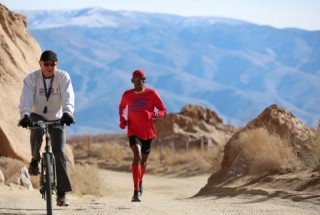
Competitor.com will produce a four-part series following defending Trials champion Meb Keflezighi as he works for a spot on his fourth Olympic team at age 40. Here’s a sneak peek at “Chasing Rio: Meb’s Road to the 2016 Olympic Trials” presented by the Rock ‘n’ Roll Marathon Series.
The post Sneak Peek: Chasing Rio: Meb’s Road to the 2016 Olympic Trials appeared first on Competitor.com.
The Effect of Asymmetry On Running Performance and Injury Prevention
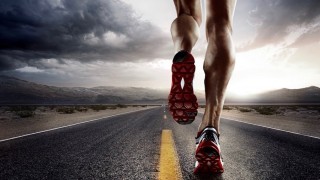
It’s difficult to pinpoint the degree of asymmetry that begins to influence the risk of injury, says noted biomechanist Jay Dicharry. Photo: Shutterstock.com
Symmetry, or so we are told by science, underlies our appreciation of beauty. But what makes for beautiful—and injury free—running?
A lack of symmetry, that is relative differences in muscle strength, motion, flexibility, balance, and mechanics between sides of the body, is one element often highlighted as a risk factor for injury. However, while it’s easy to find asymmetry in all of us—small variances in leg length, scoliosis or ankle flexibility to name a few—it’s much more challenging to determine cause and effect.
This inherent asymmetry present in every runner makes achieving complete symmetry impossible and unrealistic. Dr. Irene Davis, Director of the National Running Center at Harvard, believes that it isn’t a question of whether or not asymmetry exists, but rather how much of it. “What we don’t know is how much asymmetry is normal and how much we can tolerate before it becomes a problem.”
But how hard should runners work to achieve symmetry? Do differences in strength, flexibility and gait biomechanics on one side of the body lead to injury and diminished performance?
Jay Dicharry, a renowned physical therapist, running biomechanics expert and author of Anatomy For Runners, is adamant in support of the need for symmetry. “Running requires mobility, stability, strength, and power. While how much is enough depends on the individual, I strive to have all my athletes within 5 percent in terms of symmetry across the board.”
Dicharry believes that while it’s not as simple as asymmetry equals injury, it does lead to problems in the gait mechanics of running, which can then lead to injury. To make matters more confusing those asymmetry-related problems might even manifest on the other side of the body. “Sometimes it’s a runner’s poor right hip stability that allows their knee to rotate excessively, and that drives their chronic right knee pain. But other times, their poor right hip stability may introduce an imbalance that actually winds up in a limp and thus stressing the other leg, causing symptoms in the left side.”
But according to Dicharry, as a degree of leg dominance or asymmetry is expected, it’s difficult to pinpoint the degree of asymmetry that begins to influence the risk of injury. “Now, if you tend to be more dominant with accuracy—imagine kicking a soccer ball more accurately with your right leg—that’s OK,” Dicharry explains. “Dominance in terms of controlling your body is different. That has to do with fine motor coordination, not the ability to produce raw force and power to run symmetrically.”
RELATED: Three Keys To Running With Better Form
But are absolute levels of strength, flexibility and mechanics more important or those relative to the other side? According to Davis, the answer may be both. “It is the degree to which strength is compromised or the degree of asymmetry that exists in either the musculoskeletal or biomechanical factors.” For instance, if both hip muscles are weak but symmetrical, there is still a problem.
Research from Davis’ lab, presented in the Journal of Biomechanics, compared gait asymmetry in female runners who had never sustained a running-related injury to those with a history of lower leg stress fractures. The study found a similar degree of asymmetry in both groups, but discovered higher impact values in both legs of the injured subjects, suggesting that the magnitude of impact stress put them at greatest risk rather than any asymmetry. The researchers concluded that asymmetry might simply influence the side on which they become injured.
An article in this month’s American Journal of Sports Medicine studied female runners experiencing mild kneecap pain and found comparable results; knee pain didn’t appear to be significantly associated with any asymmetry in hip strength.
Similarly, in the sports science literature, the role of symmetry in running performance is unclear. Glimpses into the role symmetry plays in performance came in a study showing that the degree of structural knee symmetry at 8 years old predicted sprint running performance at 20.
Though we can’t pick our parents—or our knee structure—we can control some of the other physical variables. If running faster and longer is your goal, Dicharry has this to say about the impact of symmetry on performance: “I don’t advocate running on one leg, you have two of them for a reason.”
So knowing that it’s not a question of whether or not asymmetry is present but rather how much, how do runners detect and fix asymmetry?
Dicharry believes that you don’t have to go hunting for special exercises to fix asymmetry; you just have to pay attention to your body. “Essentially, it’s not the exercise you are doing, but rather the quality you feel when doing single-leg or single-sided exercises. Drop the weight, slow down, do whatever it takes to help you feel symmetric.”
Simple observations, like an inability to twist as far to one side well or good balance on one side but not the other, can indicate an asymmetry that needs to be addressed.
It’s clear that while every runner has asymmetries, ignoring the more obvious differences may be a recipe for injury. “It’s not OK to simply take note of these differences,” Dicharry stresses. “Runners should take time to improve them if they hope to influence injury risk and performance.”
RELATED: 5 Reasons To Incorporate Unilateral Strength Training
The post The Effect of Asymmetry On Running Performance and Injury Prevention appeared first on Competitor.com.
4 American Adventure Races That Will Test Your Limits
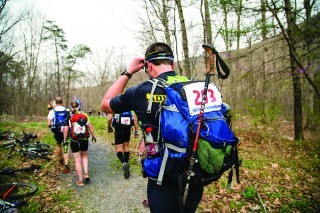
Rev3 Shenandoah Adventure Races, Photo: Chris Radcliffe
One of the precursors to obstacle course racing, adventure racing, boomed in the late 1990s and early 2000s when big international events like the Raid Gauloises, Eco Challenge and Primal Quest sent coed teams of athletes on long, mostly unsupported, multi-discipline races through remote places. Those events combined running, kayaking, mountain biking, swimming and rappelling with map-reading and navigation over undetermined courses that might take several hours or even days to finish.
Although still gear-intensive, most adventure races in the U.S. nowadays have a duration of 6 to 24 hours. Here are four great races to consider in 2016, while other events and more information can be found online at Usara.com.
AXS Moab 50-Mile Adventure Race
April 9, Moab, Utah
One of the premier adventure races in the U.S., this event includes 30 miles of mountain biking, 6 miles of singletrack trail running, 8 miles of paddling on the Colorado River and a spectacular 300-foot rappel amid the amazing scenery of red rock canyon country.
Rev3 Shenandoah Adventure Races
April 16–17, Bentonville, Va.
Racers will maneuver their way to the finish by trekking, mountain biking and paddling through the spectacular terrain of the George Washington National Forest and the Shenandoah River State Park. Four distances range from about 10 miles to more than 100 miles.
Solstice Multisport Challenge
June 18–19, Bend, Ore.
Explore the spectacular terrain in and around Bend, Ore., in this 12-hour multisport adventure. Soloists and teams of up to four will run, ride, navigate, paddle and trek through the night among thick forest, volcanic rocks and a plethora of sparkling lakes.
Never Summer Adventure Race
Aug. 5-7, Grand Lake, Colo.
The Never Summer Adventure Race is a 24-hour race through some of the toughest terrain in Colorado. The race will include paved, gravel and singletrack mountain biking, bushwhacking, trekking, strategic navigation and flat water and river paddling.
RELATED: Tips on Surviving an Obstacle Course Race
The post 4 American Adventure Races That Will Test Your Limits appeared first on Competitor.com.
Tips on Surviving an Obstacle Course Race
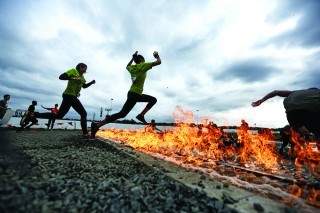
Photo: Courtesy of Tough Mudder Series
Whether you’re competing against rivals or just out to finish with friends, obstacle course racing is about tackling a course full of challenging obstructions in order to reach the finish line. In addition to running around on trails and crawling through mud pits, you might be carrying logs, swinging over monkey bars, climbing up cargo nets, scaling walls and, in some cases, jumping over fire pits or trying to avoid electric shock cords.
The sport continues to grow by leaps and bounds, and could become an Olympic sport in the future. An estimated 4 million people participated in some form of obstacle racing last year in the U.S. So whether you’re a seasoned veteran or an aspiring newbie, here are some tips to help you maximize your fun and performance.
For Beginners
Play on the playground
A little practice on those jungle gyms will get you ready for the obstacles, which in some ways aren’t much different.
Develop grip strength
Simple strength exercises such as pull-ups and pushups will help you tackle the obstacles involving rope climbs or swinging from bars.
Don’t forget the fitness
Strength training is important, but ultimately you’ll do as well as your fitness will allow. Make sure to build a good base of fitness, and yes, running is probably the best exercise for these races.
Do intervals
At least once a week, get your heart rate up and keep it up through high-intensity, short bursts of exercise. This mimics what you’ll face in an obstacle race, and it will make you fitter.
Pick a well-known race
There are dozens of mud and obstacle races out there, but they vary in quality. For your first one, it’s not a bad idea to pick a well-known brand so you know what to expect. Scroll through event photos online to see what kind of obstacles each race has.
For Competitors
Start early
Many obstacle races start in waves. If you’re interested in competing, put yourself in one of the first waves, as that’s where you’ll find the more serious racers. That also helps cut down on the crowds around the obstacles, so you won’t waste valuable seconds waiting for your turn.
Break it up
It’s easy to stay focused in an obstacle race because there’s usually another challenge facing you as soon as you finish the last. So it may be a cliché, but take the race literally one obstacle at a time.
Find your peeps
Just like in the more traditional road races, you’ll want to work your way to the front of your wave. Look for quiet, zoned-in people with runners’ physiques. They will help pace you to the end.
Not so fast
Don’t take the obstacles so fast that you slip and hurt yourself.
Don’t be a jerk
Don’t yell at others or shove someone out of the way just to save some time. Obstacle races, no matter how seriously you take them, are still supposed to be fun.
RELATED: From Nude Model to Elite Obstacle Course Racer
The post Tips on Surviving an Obstacle Course Race appeared first on Competitor.com.
Galen Rupp To Run U.S. Olympic Trials Marathon On Feb. 13
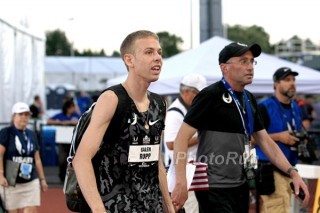
Galen Rupp said his coach, Alberto Salazar, approached him about giving the marathon a shot after last summer's world championships. Photo: PhotoRun.net
Ending weeks of speculation, reigning Olympic 10,000m silver medalist Galen Rupp announced on Thursday that he’ll be making his marathon debut at the U.S. Olympic Trials on Saturday, Feb. 13 in Los Angeles. Rupp qualified for the race on Dec. 13, winning the Foot Traffic Holiday Half Marathon in Portland, Ore., in 1 hour, 1 minute and 20 seconds—well under the U.S. Olympic Trials “B” standard of 1:05:00.
“I’m really happy and excited to announce that I’ll be running the Olympic Trials coming up in February, in the marathon,” Rupp said in an exclusive announcement on USATF.TV.
The 29-year-old Rupp, who trains as a member of Alberto Salazar’s Nike Oregon Project, said that the 10,000m will still be his primary focus for 2016. He’ll attempt to make the Olympic team in the marathon in an effort to give him more flexibility in regard to which events he’d like to race at this summer’s Games in Rio.
“The 10K is still my primary focus but I’m excited about the possibility of doing that and the marathon or that and the 5K,” said Rupp, who also ran the 5,000m for the U.S. in London, where he finished seventh.
RELATED: Excitement Mounts As Olympic Trials Fast Approaches
Rupp, who finished fifth in both the 10,000 and 5,000 at last summer’s world championships, has captured seven straight national titles in the 10,000m and holds the American record of 26:44.36 in the event. In the 5,000, Rupp has won one national title and is one of only a handful of Americans to have broken 13 minutes (12:58.90) for the 12-1/2 lap race. At global championships since 2009, he’s finished eighth or better five times in the 10,000m; in the 5,000m, he has four top-10 finishes to his name.
Salazar, the former three-time New York City Marathon champion and Boston Marathon champion who has coached Rupp since he was 16 years old, bought up the idea of the marathon out of the blue after the disappointment of last year’s world championships in Beijing.
“After this last summer it kind of came up in conversation with Alberto,” explained Rupp, whose 60:30 half-marathon personal best is the fifth fastest U.S. time in history. “He just said to keep an open mind with it. We’re not going to commit to anything…it took me a little while to wrap my head around it. It’s definitely a new challenge and it’s a little daunting just because I’ve never done it before. It’s such a big step up in distance but I’m really excited to give it a shot and I think with everything we’ve done to prepare me that it’s going to turn out alright.”
Rupp will face a formidable field in L.A., one which includes defending trials champion and 2014 Boston Marathon champion Meb Keflezighi, four-time Olympian Abdi Abdirahman, Dathan Ritzenhein, Rupp’s former Oregon Project training partner and the top American finisher at last year’s Boston Marathon, reigning U.S. marathon champion Jared Ward, and others. Ryan Hall, the Olympic Trials Marathon record holder (2:09:02) who made the last two Olympic teams in the marathon, announced his retirement earlier this month.
“It’s always tough in an Olympic year,” said Rupp, who still plans to run the world indoor championships in Portland March 18-20. “It’s way harder than a normal year because everybody ups their game and they definitely want to make the Olympic team too. There’s obviously going to be a lot of challenges. There’s some great athletes in the field, guys that certainly have a lot more experience than I do in running a marathon. I know it’s going to be tough and I always say I have to respect the distance, respect the competition because it’s not going to be easy. Those guys have been so great for so long and they’re there for a reason and they’re definitely going to make it tough.”
RELATED: 2016 Olympic Trials Qualifiers Buy The Numbers
The post Galen Rupp To Run U.S. Olympic Trials Marathon On Feb. 13 appeared first on Competitor.com.
3 Secrets of Japanese Marathoning Success
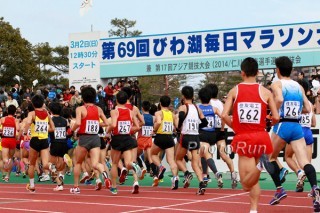
Laka Biwa is Japan's oldest—and one of its most popular—marathons. Photo: PhotoRun.net
Running is steeped in Japanese culture and has been for hundreds of years, dating back to when the courier system during the Edo Period required fit runners to relay important messages up and over treacherous terrain. But of all the distances and disciplines, it’s the marathon that the Japanese love best. Viewership of running events on television and online rivals that of the Super Bowl in the United States. Marathoners like “Citizen Runner” Yuki Kawauchi are hailed as national heroes akin to LeBron James and Peyton Manning.
There are sects of “marathon monks” who, over the course of a 100-day stretch, will cover 52.5 miles daily—twice the length of a standard marathon. From a professional marathoning standpoint, 50 years ago, it was the Japanese—not Kenyans or Ethiopians—who stood atop the Olympic podium. In 1966, Japanese runners had posted 15 out of the 17 fastest marathon times in the world. In 2001, Naoko Takahashi became the first woman to break the 2:20 marathon barrier in Berlin and as recently as 2013, Yuki Kawauchi ran not just one, but four sub-2:10 marathons in one year.
So what is a country nearly the size of Montana doing right? Are there lessons to learn from many years of running wisdom? You bet. Here are three key secrets of the Japanese marathoning success:
1. A rock solid base aerobic base.
Nobuya “Nobby” Hashizume of the Lydiard Foundation served as an assistant coach for the Hitachi Ltd., Running Team between 1988 and 1991 and says that simply running a lot of mileage—building up a solid base of slower, steady miles—is one critical factor of Japanese success. “The triathlon great, Mark Allen, calls fast, race-specific training ‘sexy’ but the boring groundwork is what really makes you a great marathon runner,” Hashizume says. “Japanese took it to their heart.” Hashizume points out that Takahashi’s former coach, Yoshio Koide, had his runners logging 200 miles a week so that they could close the final 5K of the marathon as fast as possible. Hashizume also recalls that one corporate team coach, the former teammate of legendary marathoner Toshihiko Seko under late coach Kiyoshi Nakamura, had his runners log 60 minutes in the morning, 90 minutes in mid-day and 60 minutes in the evening every day for 4 weeks during the build-up phase. Hashizume calls this kind of running “get-down-and-dirty-on-your-knees” aerobic-base work, and the Japanese have mastered it for decades. “It so happens that the longer the competitive distance, the more heavily we rely on training. So marathoning happens to be one of Japan’s favorite events.”
2. A focused passion for hard work.
There are no half measures for Japanese marathoners. And where many western elites blame genetic predisposition for not being able to achieve a breakthrough, such thinking doesn’t occur amongst the Japanese professional marathoners. Hashizume quotes coach Nakamura as evidence of this truism: “Natural talent has limits; but there’s no limit to hard work.” Hashizume suggests that Japanese runners still cling to their dreams. “While some young westerners seek some scientific proof whether or not it’s ‘worth trying,’ Japanese still hold, sometimes rather silly old-fashioned ‘romantic’ view that lots of hard work can overcome lack of natural talent.”
Kevin Beck, editor of the book Run Strong, which dedicates a section to the Japanese training ethos bases his conclusions of the Japanese passion from personal observations. “I see groups of elite Japanese women training around the Boulder reservoir and at Fairview High School,” he says. “I don’t know that I’ve ever seen a more focused set of runners anywhere.”
3. Discipline and perseverance.
Running 26.2 miles as fast as possible requires discipline in all aspects of your life, and the Japanese have this down. Beck calls the Japanese art of perseverance “tireless work and quiet suffering” and says they excel at it. “The marathon is the consummate platform through which [tireless work and quiet suffering] can be expressed beautifully,” he says. “Toshihiko Seko was an over-distance monster known for incorporating not only loads of spectacularly slow running, but walks of 60K or more,” he says. This kind of discipline and perseverance, dealing with the aches and pains and doing “one more” lap or mile is not for runners who want quick results.
Hashizume calls the desire for quick results a “fast-food mentality” in running. “[Some] runners seek bare-minimum to prepare for a marathon, or any other event for that matter,” he says. “Getting into shape is a gradual business. You need to take time to build-up gradually and steadily. You do what you can and the results will follow.”
RELATED: 4 Secrets of The Flying Finns
The post 3 Secrets of Japanese Marathoning Success appeared first on Competitor.com.
Out There: The Blood Donor
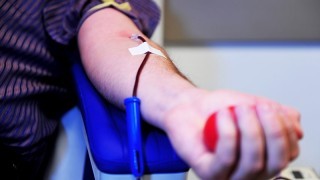
Columnist Susan Lacke donates blood during training – is it a good idea?
Earlier this week, my local newspaper ran a story stating hospitals and blood banks nationwide had an “urgent need” for blood donations. Winter is typically a tough time for recruiting donors, but recent snowstorms around the country added insult to injury by forcing the cancellation of many blood drives.
“Hmm,” I thought to myself while reading the story, “I haven’t donated in a while. I should probably get on that.” I filed it away on my List of Good Intentions, alongside “daily core workouts” and “green juice cleanse.”
Later that day, I was out for a run when I came upon a sidewalk sign with an arrow pointing to a nearby church: BLOOD DRIVE. FREE COOKIES.
If that wasn’t a sign from the universe, I don’t know what is. After all, I’ve been known to sign up for Ironman triathlons just for the promise of free cookies; 30 minutes and a pint of bodily fluid is easy work in comparison. I popped my head into the drive to schedule an appointment for that evening.
“We don’t get a lot of your kind here,” said the nurse as she swabbed iodine in the crook of my arm in preparation for the collection process.
My kind? I felt strangely self-conscious. What type was that? Female? 30-something? Brunette? Obnoxious? The nurse, Megan, pointed at the race shirt I was wearing: “Athletes.” As a fellow runner herself, Megan constantly heard a refrain of “Thanks, but no thanks” when she invited her training partners to donate blood at local drives.
“Why do you think that is?” I queried.
Megan shrugged. “Some have valid health reasons, like low iron levels. But most of them just don’t want it to affect their training.”
While pumping out my donation, I took to Twitter to ask athletes if they gave blood. Almost immediately, replies poured in:
“No way! HCT drop!”
“I always avoided it because of the impact to training.”
“It makes me feel drained for days.”
“It takes too long to recover!”
“I need all the red blood cells I can get.”
“Giving blood is basically giving away training. So I guess it depends on how one prioritizes that.”
I stared at the tweets on my phone, horrified. Was I making a mistake by donating? Would I suffer a training setback as a result of my simple desire to help others?
There’s not a ton of information to answer that question. Only a few studies on athletes and blood donation have been published, and most of those have studied cyclists, not runners. One study found maximal performance (or the ability to do hard efforts) of cyclists decreased for one week after blood donation, but submaximal efforts (in other words, easy to moderate efforts) were unaffected. In another study, researchers declared a single blood donation did not alter the physical fitness of healthy people.
But a different study claims there are effects on aerobic performance, and they could last between two and three weeks. That’s a long time to feel winded and sluggish.
Then again, I suppose that pales in comparison to, you know, being in a situation where I need blood. Despite my talent for doing dumb things that land me in emergency rooms, I’ve yet to be so critically injured or ill that a blood transfusion was required. For that, I’m thankful. I’ve been given a strong, healthy body. It seems rude to bogart it for the pursuit of a hobby when there are people who need blood to actually stay alive.
A Twitter friend, Chris, summed up my sentiments well: “Yes, I donate, but I run to slay my own demons, not beat other people.” Perhaps if my paycheck was tied to my mile splits, I’d feel compelled to protect my blood, but it’s not, so I’m willing to deal with the consequences of my decision to give it away.
And so far, those consequences have been minimal. In the days that have passed since my donation, I haven’t noticed that much of a difference in my workouts. A little bit of fatigue, yes, but nothing worse than what I feel after a long run on a hot day. If anything, I’ve enjoyed having an excuse to scale back my effort for a couple of days. I’ve scheduled my next donation already.
I’m not alone. Though many runners declared an aversion to blood donation (some by choice, some because of health issues), an additional set proudly boasted their donor status. They shared how they schedule blood donations during rest weeks, or donate only during the offseason and light training cycles (like right now, during the winter months, when donors are desperately needed). A couple runners swore by donating platelets only instead of whole blood, which has less of a physiological impact on the donor (and a huge positive impact on those who utilize the platelets, such as cancer patients undergoing chemotherapy).
Most donor-athletes said they feel tired for a day or two after giving blood, then bounce back full force. All said the feeling of saving lives outweighed the temporary fatigue. Let’s face it—most of us run around in spandex like superheroes; might as well take the opportunity to actually be one.
Also, did I mention there are free cookies?
If you’re healthy and able to donate blood, find a blood drive near you by contacting your local blood bank or visiting the American Red Cross website.
* * *
About The Author:
Susan Lacke does 5Ks, Ironman Triathlons and everything in between to justify her love for cupcakes (yes, she eats that many). Susan lives and trains in Salt Lake City, Utah with three animals: A labrador, a cattle dog, and a freakishly tall triathlete husband. She claims to be of sound mind, though this has yet to be substantiated by a medical expert. Follow her on Twitter: @SusanLacke.
The post Out There: The Blood Donor appeared first on Competitor.com.
Ryan Hall's Blog
- Ryan Hall's profile
- 21 followers



